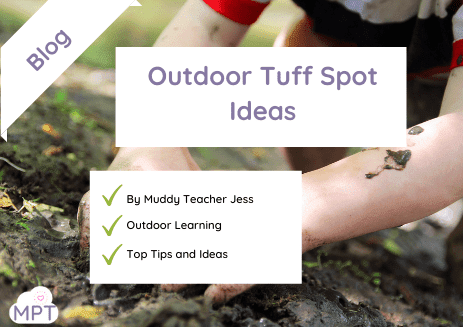Outdoor Tuff Spot Ideas
By Jessica Habgood
I love going outdoors with my daughter Felicity and setting up fun learning and play opportunities for her. Here are a few outdoor learning Tuff Spots I have set up for her whilst she was a baby and toddler.
Petal Play Tuff Spots.
Water and flower play is so beneficial for babies and toddlers. I have used this Tuff Spot idea time and again, using different types of petals from the garden during different plants and seasons and from gifted bouquets!
It such a wonderful sensory experience. On the simplest level, with just petals in a tray, babies are learning about cause and effect from splashing about, plus developing fine motor through pinching and pointing at the petals. So simple, yet just perfect!
As Felicity grew older, I have added in extra utensils to the Tuff Spot. We made rose petal tea, with her teacup set and teaspoons. She loved scooping up the petals and stirring them around, and acting it out.
We also created petal ice gems, filled with flowers, leaves, buds and petals. On our warm sunny morning they melted pretty quickly. This is also a super natural experiment for children to observe the process of ice and melting. We enjoyed the sensory experience, feeling them and moving them across the tray!
Mud Pie Tuff Spots
For our Mud Pie Tuff Spots, we collected our natural ingredients either from the garden or whilst on walks. Our favourite Mud Pie recipes include mud, pine cones, stones of varying sizes, grass, moss and flowers. If we are lucky enough to have been to the beach, we can add in fancy shells too. I add in extra flowerpots, cupcake trays and pots and pans to the tuff spot. Using the cupcake tray is usually Felicity’s favourite as she can decorate the mud pies in different ways! It’s great for early maths development, subitising, counting in and out and creating arrays.
Small World Tuff Spots
For this Tuff Spot, Felicity helped me collect flower pots, stones, grass and pebbles from around the garden and we made a fun digger tray. By using natural resources around us in the garden, it helps Felicity to see that she can play these games anywhere outdoors and set them up by herself!
We acted out funny scenarios with her with the people, trucks getting stuck or falling down and saving each other!
Giving children the opportunity to act out experiences through small world play supports the development of their personal, social and emotional skills.
Children can soak up so much new language through this sort of play, helping them make connections and build on their imagination. It can also help develop their social skills later down the line. The act of small world play helps with listening, turn-taking, sharing and negotiating. The role of the adult playing with the child is so important in being a role model to help develop these skills.
Other ideas for outdoor Tuff Spots are jungle or Jurassic themes- collecting sticks, leaves and foliage to create their own scene and add in your own jungle animals or dinosaurs. Or a beach scene, using sand, pebbles, shells and water, then add in some sea creatures.
I can’t wait to get back outdoors and set up my tuff spot again now Spring is around the corner. The fact that Felicity can help set it up herself is just so important and makes her play and learning so much more meaningful for her.
Follow your child’s lead and their play with a flourish. Felicity has shown a real interest in dinosaurs recently and I can’t wait to get outside and collect some long blades of grass with her, some piles of logs and leaves and create her own swampy scene to play in with some toy dinosaurs. By utilising real-life natural resources, it provides open-ended play opportunities. A stick can be a tree, a wand, a house or a spoon- whatever their imagination can make it! Creating and engaging with natural resources in play also supports the children’s environmental awareness and develop respect for living things. So, let them get their hands mucky, follow their lead and enjoy creating outdoor tuff spots together!


